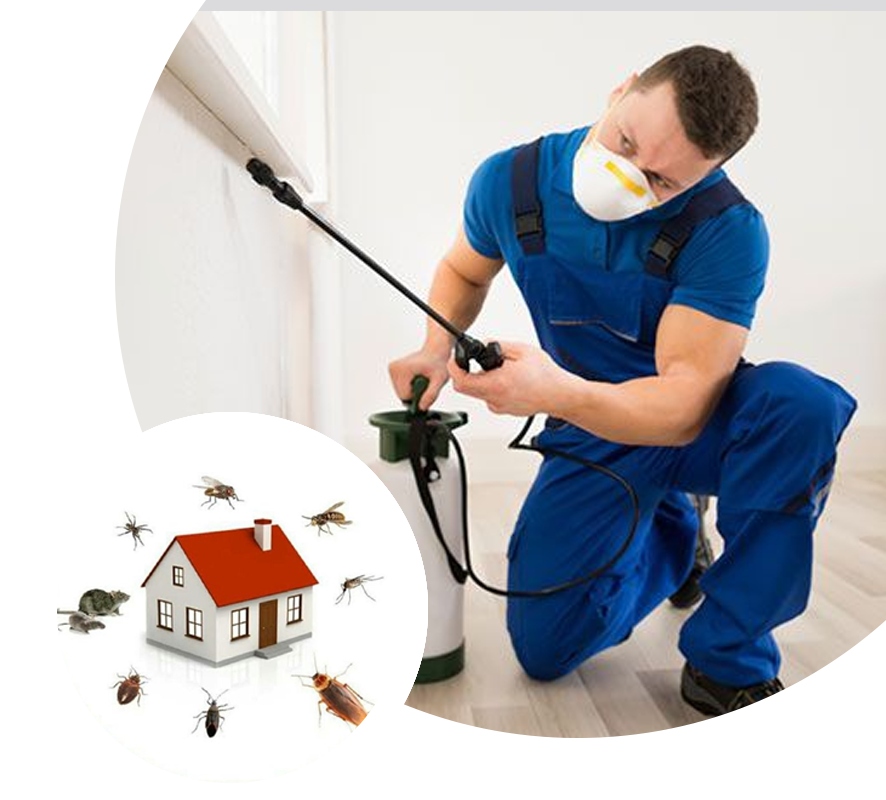Professional Parasite Control Techniques for Long-Term Results
In the realm of parasite control, accomplishing sustained efficiency and lasting outcomes requires a thorough technique that transcends simple extermination. Expert pest control methods encapsulate a thorough technique that starts with a thorough examination and evaluation, adhered to by accurate parasite recognition to understand their actions patterns. The application of Integrated Parasite Management (IPM) concepts, combined with eco-conscious therapies, develops the foundation of lasting bug elimination. The true test exists in the ongoing surveillance and maintenance of the dealt with locations, making sure a pest-free atmosphere for the near future. By diving into the ins and outs of these strategies, a much deeper understanding of specialist bug control techniques for enduring end results emerges.
Assessment and Assessment
Upon going into a building for bug control solutions, the preliminary step is an extensive examination and analysis to determine the extent of the problem and figure out the most effective treatment strategy. Professional insect control service technicians are educated to thoroughly analyze the facilities, seeking indicators of insect activity such as droppings, gnaw marks, nests, or any type of architectural damages. They will also assess the conditions that may be attracting parasites, such as food resources, water leaks, or access factors.

Parasite Recognition and Behavior

Additionally, recognizing the actions of the recognized pest is vital to applying reliable control actions. Knowing where pests nest, what they feed on, and their task patterns can help pest control professionals create techniques to eradicate them successfully.
Integrated Insect Management (IPM)
Integrated Bug Monitoring (IPM) methods incorporate several strategies to control and stop pest invasions in a lasting and eco-friendly fashion. pest control near me. By integrating techniques such as organic control, habitat control, alteration of cultural techniques, and the use of resistant varieties, IPM aims to minimize making use of chemical pesticides
One of about his the key concepts of IPM is the focus on avoidance. This aggressive method entails tracking bug populations consistently to spot any type of prospective concerns before they escalate. By determining bug troubles at an early stage, pest control steps can be applied promptly and properly.
Moreover, IPM advertises using non-toxic insect control techniques whenever possible. This can consist of using natural predators of the insects, presenting helpful insects, or utilizing scents to disrupt breeding patterns. By reducing dependence on chemical pesticides, IPM not just shields the environment however additionally aids maintain a balance in the environment.
Environmentally-Friendly Treatments
Applying eco-conscious approaches in pest control procedures can efficiently deal with problems while focusing on environmental sustainability. Environmentally-friendly therapies concentrate on minimizing the impact of bug control techniques on ecosystems, non-target organisms, company website and human health and wellness. These methods often entail using natural predators, such as ladybugs or nematodes, to regulate pest populaces, minimizing the need for chemical interventions. In addition, methods like habitat adjustment, such as changing moisture degrees or eliminating food sources, can help hinder bugs without making use of harmful materials.
Another secret aspect of environmentally-friendly therapies is the use of natural and naturally degradable products that damage down quickly without leaving hazardous deposits in the environment. Organic pesticides obtained from plants like chrysanthemums or neem supply efficient parasite control while positioning marginal risk to non-target types. In addition, employing techniques like warmth treatments or scent catches can target specific bugs with accuracy, minimizing the overall ecological influence of pest control methods.
Continuous Surveillance and Upkeep
Routine assessments by qualified specialists are needed to determine any indicators of navigate here insect activity, analyze the efficiency of previous treatments, and make changes to the insect control strategy as needed. By keeping track of parasite populaces over time, pest control specialists can track patterns, anticipate prospective issues, and apply precautionary steps to decrease the danger of future problems.
Along with tracking, maintenance techniques are important for lasting pest control success. This includes applying appropriate cleanliness measures to get rid of prospective food and water resources for insects, securing off entry factors to stop insects from getting in the facilities, and dealing with any structural concerns that could help with parasite infestations (pest control near me). By integrating ongoing monitoring and maintenance into an integrated pest management strategy, businesses can guarantee a pest-free environment and safeguard their residential property versus expensive damage and health risks
Conclusion
To conclude, making use of specialist parasite control techniques such as thorough inspection and evaluation, precise insect identification and understanding of their behavior, incorporated parasite management strategies, environmentally-friendly therapies, and recurring surveillance and upkeep are crucial for attaining lasting cause bug control. By executing these techniques, individuals can effectively handle insect invasions and maintain a pest-free setting in a lasting way.